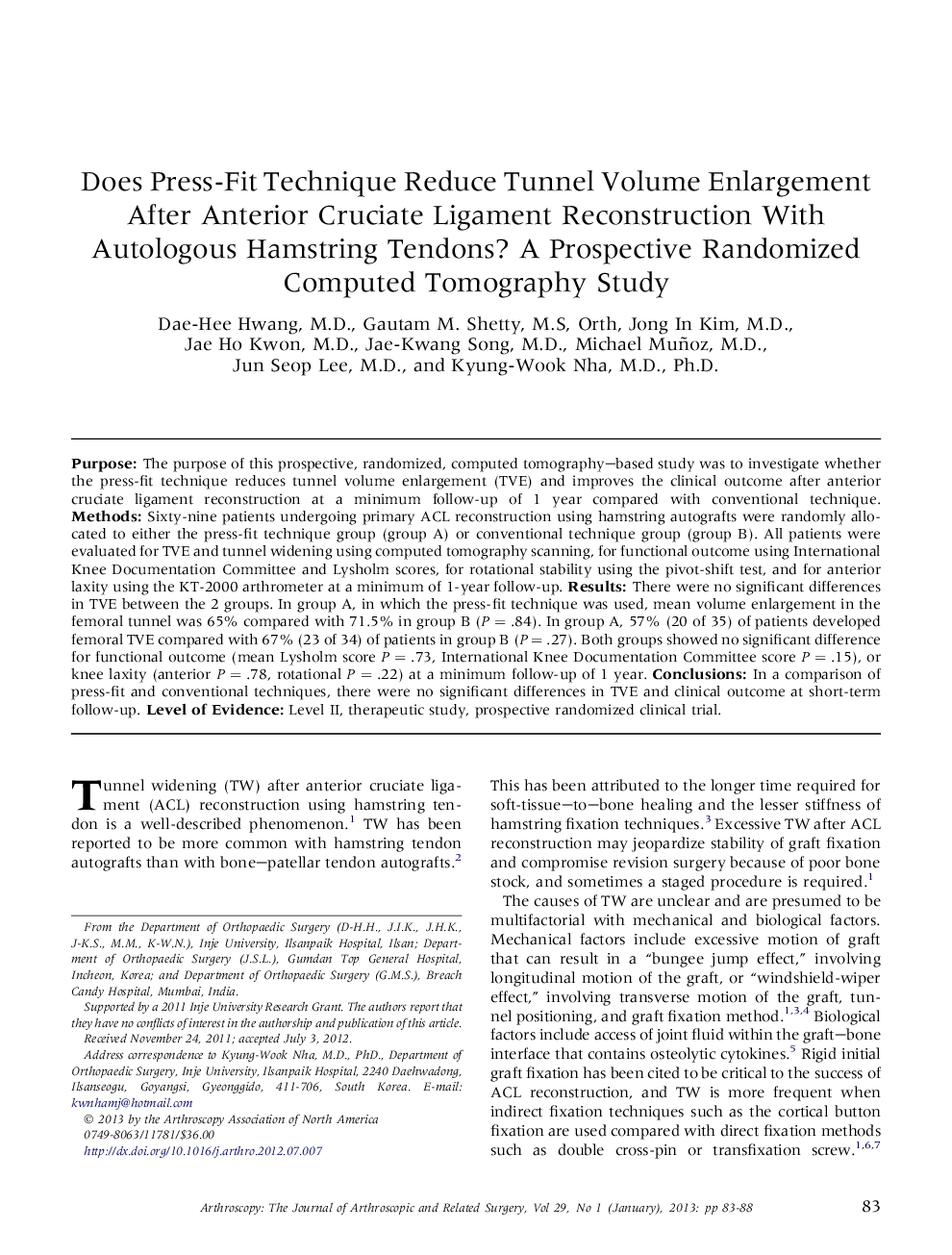| Article ID | Journal | Published Year | Pages | File Type |
|---|---|---|---|---|
| 4043965 | Arthroscopy: The Journal of Arthroscopic & Related Surgery | 2013 | 6 Pages |
PurposeThe purpose of this prospective, randomized, computed tomography–based study was to investigate whether the press-fit technique reduces tunnel volume enlargement (TVE) and improves the clinical outcome after anterior cruciate ligament reconstruction at a minimum follow-up of 1 year compared with conventional technique.MethodsSixty-nine patients undergoing primary ACL reconstruction using hamstring autografts were randomly allocated to either the press-fit technique group (group A) or conventional technique group (group B). All patients were evaluated for TVE and tunnel widening using computed tomography scanning, for functional outcome using International Knee Documentation Committee and Lysholm scores, for rotational stability using the pivot-shift test, and for anterior laxity using the KT-2000 arthrometer at a minimum of 1-year follow-up.ResultsThere were no significant differences in TVE between the 2 groups. In group A, in which the press-fit technique was used, mean volume enlargement in the femoral tunnel was 65% compared with 71.5% in group B (P = .84). In group A, 57% (20 of 35) of patients developed femoral TVE compared with 67% (23 of 34) of patients in group B (P = .27). Both groups showed no significant difference for functional outcome (mean Lysholm score P = .73, International Knee Documentation Committee score P = .15), or knee laxity (anterior P = .78, rotational P = .22) at a minimum follow-up of 1 year.ConclusionsIn a comparison of press-fit and conventional techniques, there were no significant differences in TVE and clinical outcome at short-term follow-up.Level of EvidenceLevel II, therapeutic study, prospective randomized clinical trial.
